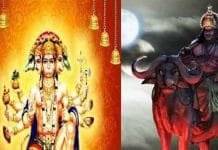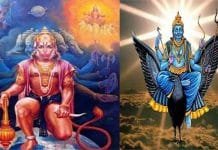INVC News
Haridwar : Discover the profound significance of offering Belpatra on the Shivling. Explore the steps and places that hold immense reverence in this age-old Hindu ritual for connecting with Lord Shiva.
When it comes to worshipping Lord Shiva, one of the most revered rituals is offering Belpatra on the Shivling. This age-old practice holds significant importance in Hindu culture and is believed to bestow immense blessings upon the devotee. In this comprehensive guide, we will delve into the intricacies of offering Belpatra at five specific places, ensuring that your worship is conducted in accordance with the highest reverence.

Preparing the Belpatra
To begin with, the ritual of offering Belpatra requires meticulous attention to detail. Prior to presenting the sacred leaves to Lord Shiva, it is imperative to wash the Belpatra thoroughly with clean water. This purification process symbolizes the devotee’s respect and devotion towards the deity.
The Mantras: A Gateway to Spiritual Connection
Chanting mantras during the act of offering Belpatra amplifies the spiritual connection between the worshipper and Lord Shiva. The universally revered Om Namah Shivay mantra should resonate through the air as you place the Belpatra on the Shivling. Additionally, there exists a specific mantra for the purpose of offering Belpatra, further enhancing the sanctity of this ritual.
The Five Sacred Places for Offering Belpatra
1. Nandishwar
Nandishwar, a devoted attendant of Lord Shiva, holds a special place in Hindu mythology. As a gesture of reverence, the first Belpatra should be offered to Nandishwar. This act not only honors the deity’s loyal devotee but also sets the tone for the rest of the ritual.

2. Jalhari – The Hand of Lord Ganesha
Moving forward, the second Belpatra should be placed on the Jalhari, the water spout that represents Lord Ganesha’s hand. This symbolic gesture signifies the harmony between Lord Shiva and Lord Ganesha, both integral figures in Hinduism.
3. Intersection of Shivling and Jalhari
At the point where the Shivling and Jalhari meet, the third Belpatra should be gently offered. This conjunction symbolizes the cosmic union of the divine forces and the balance they bring to the universe.
4. Urn Dripping Water on Shivling
The fourth Belpatra takes its place near the urn from which water cascades gently onto the Shivling. This gesture represents the continuous flow of blessings from the divine to the mortal realm.
5. Personal Connection with Shivling
The final Belpatra holds the utmost significance. It is offered directly on the Shivling you are worshipping, establishing a deeply personal connection between the worshipper and Lord Shiva. This act signifies the devotion and gratitude one feels towards the deity.
Conclusion
The act of offering Belpatra on the Shivling is a profound way to connect with Lord Shiva and seek his divine blessings. Each step of this ritual carries deep symbolism and holds a unique place in the hearts of devotees. By following these detailed instructions, you can ensure that your worship is conducted with the utmost reverence and sincerity, allowing you to forge a stronger spiritual connection.














